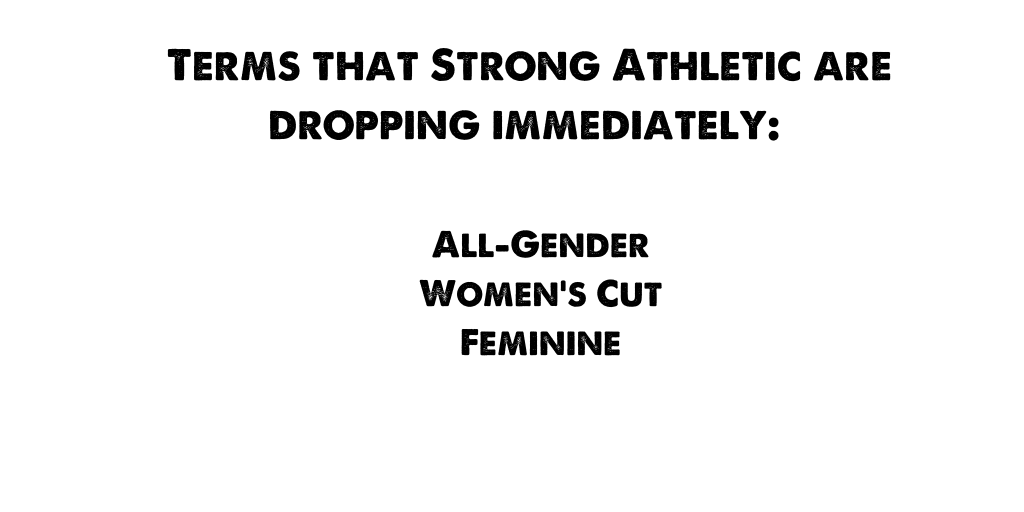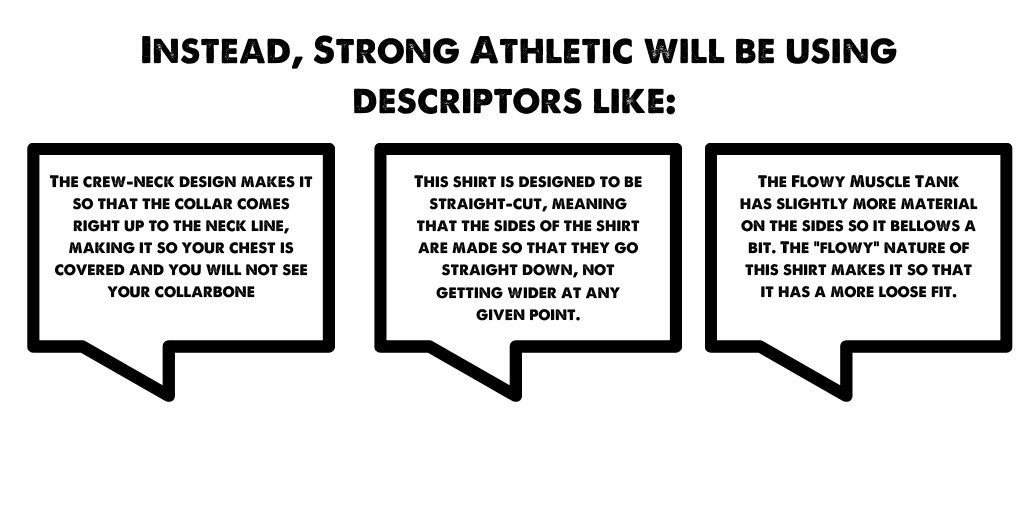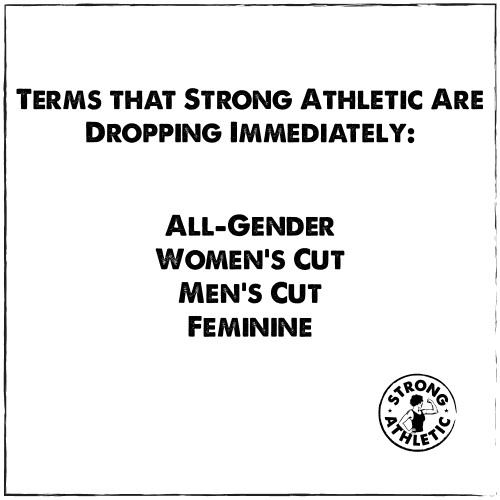Clothing and Gender: Why Gender-Based Labels in the Fashion Industry are Problematic
Posted by JayCee Cooper, Sorrell Joshua, Nadia Kean on Aug 10th 2020
Why the Fashion Industry Should Stop Using Gender-Based Labels for Clothing
Over the month of August 2020, Strong Athletic will be changing how our clothes are categorized and how they are labeled to no longer use gender-based language in any of the titles or descriptions. Clothing doesn’t have a gender and Strong Athletic believes that anyone should be able to wear any style of clothes without question. Our staff and community understand that binary language can be really harmful to perpetuate and Strong Athletic will no longer use gender-based terminology to describe our shirts.

10 Gender-based Terms that Should no Longer be used in the Fashion Industry
Here are some examples of our current list of terms and phrases that we will no longer use:
- All-gender
- Unisex
- Feminine
- Masculine
- Female cut or shirt style
- Women's cut or shirt style
- Lady's cut or shirt style
- Male cut or shirt style
- Men's cut or shirt style
- Women's sizing
- Men’s sizing
We are replacing our current lists of terms and phrases with more meaningful and accurate descriptions of our clothing and their fit. We no longer want to reinforce stereotypes and gender-norms that we know are damaging. We also realize how language shapes the way we think about the world (Boroditsky, 2009).

What are the 3 Main Gender-based Terms the T-shirt Industry Uses
Every shirt we make is available for all genders, meaning anyone, regardless of how they identify, can wear any and every shirt we create. The t-shirt industry, in most cases, breaks down fit into three main categories and it also bases sizing on those categories.
- Men’s Cut
- Women’s Cut
- Unisex Cut
“Men’s sizing” is typically larger than “women’s sizing”, so if you’re holding a “men’s” large it will be larger than a “women’s” large. Shirts that are labeled as “all-gender” or “unisex” are usually comparable to what this industry erroneously calls “men’s sizing”. What does “men’s sizing” even mean? The sizing difference and implication of fit reinforce the stereotype that the size and shape of people’s bodies are also gendered.
The Clothing Industry is Outdated and it's Still Operating Under the Antiquated Word "Mankind"
Naming only select products as “all-gender” or “unisex” reinforces the belief that our bodies and what we wear are relative to “male-ness” only, because all-gender sizing is usually parallel to “men’s sizing”, Strong Athletic believes the clothing industry is saying that having a body with closer proximity to the white cisheteronormative ideal of what a man’s body should look like, holds more value, and everyone else is other or different. To go deeper, it’s not so much that Strong Athletic takes issue with the terms “all-gender” or “unisex”, but rather our issue is with how these labels are used in the clothing industry and how they are a constant reinforcement of the false idea that clothes are gendered to begin with. We see the impact that stereotypical notions of white masculinity has in society and in fashion; particularly, how our proximity to that ideal is seen as more valuable, defaulted, and imprinted into the categorization of clothing.The current default is flawed and moving forward, Strong Athletic actively chooses not to reinforce it.
Moving forward, Strong Athletic will describe our clothing in the way that serves our community best based on our belief system that gender is a human created concept that is plagued by problematic stereotypes and misconceptions (Butler, 1990). Like this company, our brand, and our team, this too is a work in progress.If you find gender-based language that is used to describe the style or size of the shirts that we sell, please notify us through email, and thank you in advance. If you'd like to share your story with the Strong Athletic Community on how gender-based langauge has negativly impacted your life, please write to us, and we'll get back to you as soon as possible.
Further reading -
Boroditsky, L. (2009). How Does Language Shape the Way We Think. In M. Brockman (Ed.), What’s Next (pp. 116-129). New York, NY: Vintage Books
Butler, J. (1990). Gender Trouble: Feminism and the Subversion of Identity. Routledge.
keywords: gender in the fashion industry, gendered language to label clothing, unisex labels in the fashion industry, what does unisex mean, what does all-gender clothing mean?, why is clothing in women's cut or men's cut, how should you talk about gender in the t-shirt industry, clothing and gender fashion industry, clothing and gender identity, why is gender-neutral clothing important, all fashion should be gender neutral debate, why is gender-neutral clothing important, why descriptions of clothing in fashion is important


